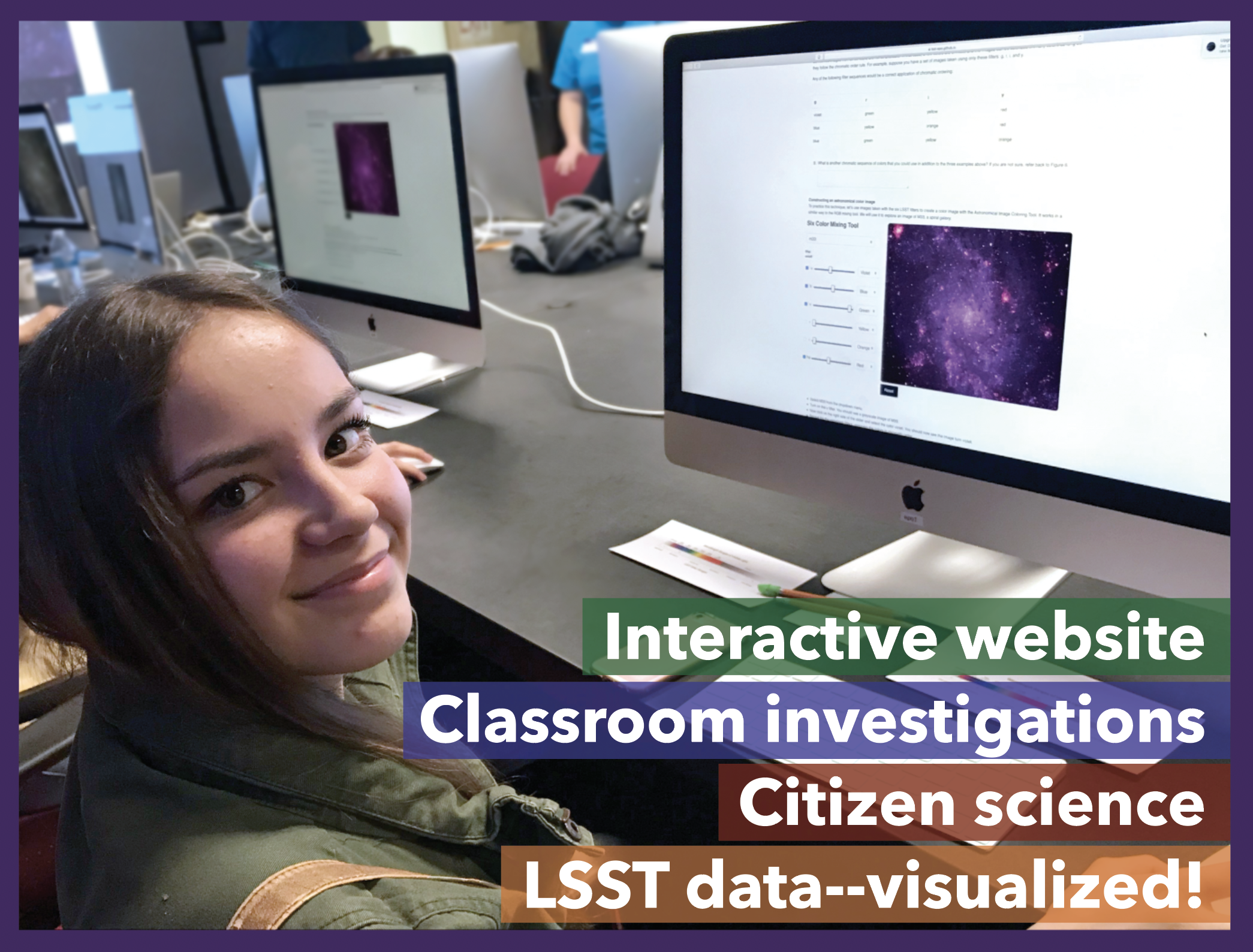General Public
The EPO Website, currently under construction, will feature news about Rubin Observatory discoveries, and profiles of Rubin Observatory scientists and engineers and their work. Designed to be accessible and engaging to a diverse audience, the website will provide non-specialists with online opportunities to explore Rubin Observatory data, and to learn how that data contributes to science and discovery. The website will be optimized for use on mobile devices, and will contain Spanish-language content relevant to the Chilean community.
Planetariums & Informal Science Centers
Rubin Observatory EPO will maintain an easy-to-use gallery of high-quality multimedia visualizations that can be downloaded and integrated into exhibits and presentations. This will provide flexibility to institutions of differing size and technological capability. Visualizations, associated metadata, and distribution methods will follow industry standards and best practices.


